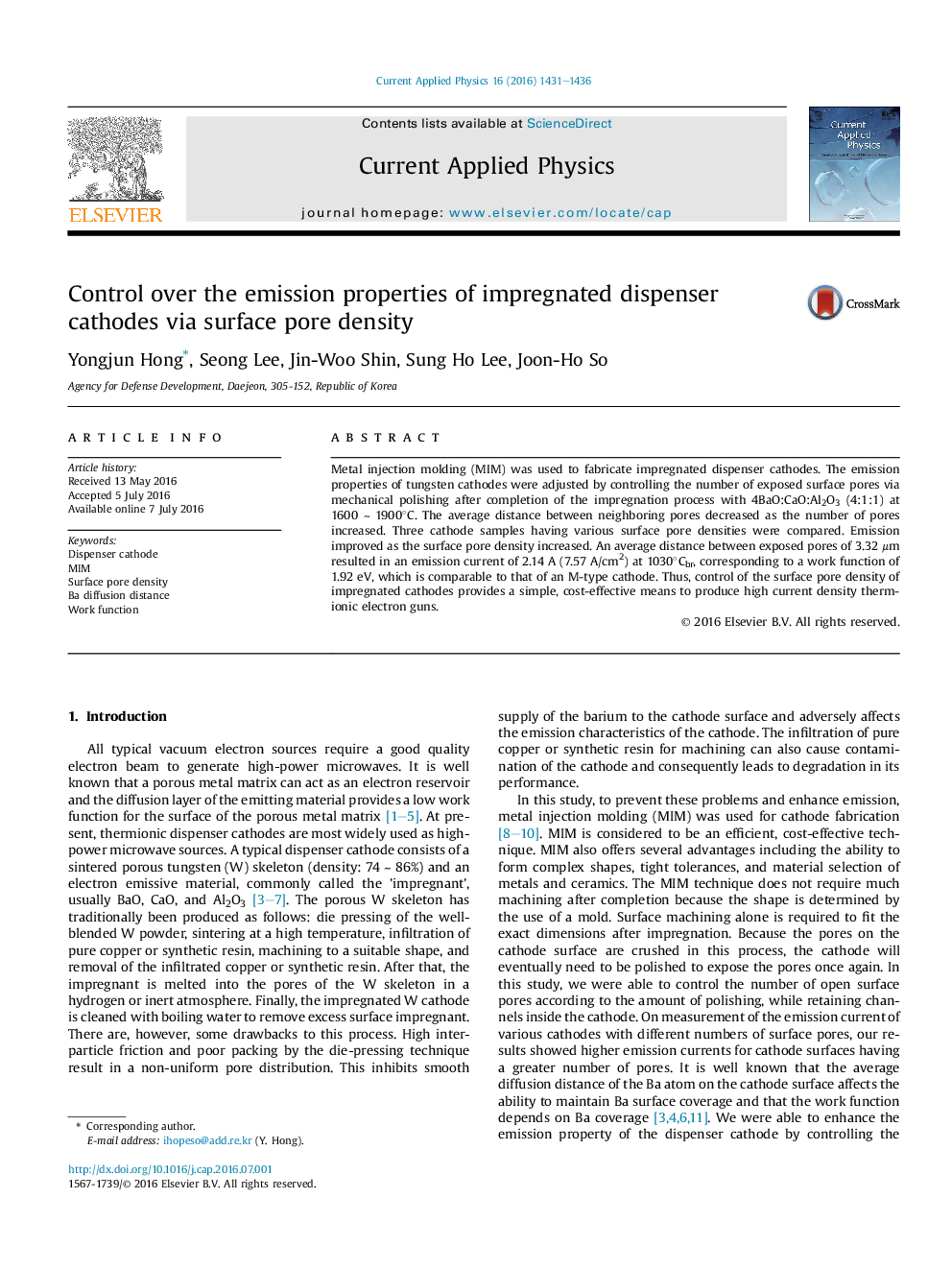| Article ID | Journal | Published Year | Pages | File Type |
|---|---|---|---|---|
| 1785472 | Current Applied Physics | 2016 | 6 Pages |
•We fabricate the impregnated dispenser cathodes by means of Metal Injection Molding (MIM) method.•The relationship between the surface pore density and the emission properties of the impregnated cathodes is investigated.•This work helps to suggest the optimal average diffusion distance of the Ba atom to maintain the BaO surface coverage of the typical Philips type “S” cathode.•The further improvements in the emission properties of a typical impregnated dispenser cathode could be cost-effectively achieved by controlling the surface pore density.
Metal injection molding (MIM) was used to fabricate impregnated dispenser cathodes. The emission properties of tungsten cathodes were adjusted by controlling the number of exposed surface pores via mechanical polishing after completion of the impregnation process with 4BaO:CaO:Al2O3 (4:1:1) at 1600 ∼ 1900°C. The average distance between neighboring pores decreased as the number of pores increased. Three cathode samples having various surface pore densities were compared. Emission improved as the surface pore density increased. An average distance between exposed pores of 3.32 μm resulted in an emission current of 2.14 A (7.57 A/cm2) at 1030°Cbr, corresponding to a work function of 1.92 eV, which is comparable to that of an M-type cathode. Thus, control of the surface pore density of impregnated cathodes provides a simple, cost-effective means to produce high current density thermionic electron guns.
